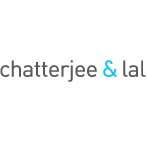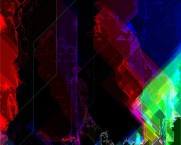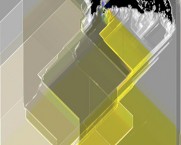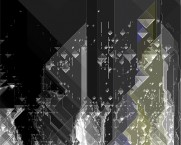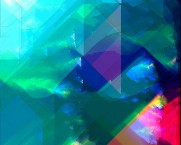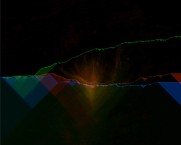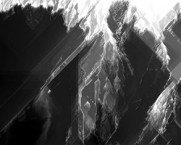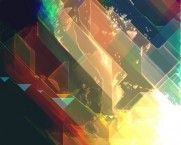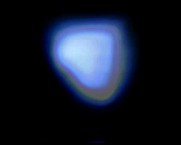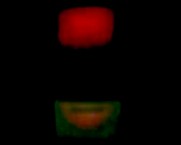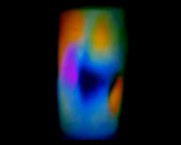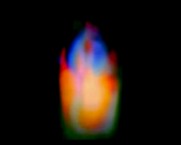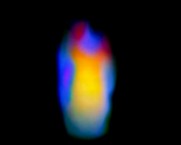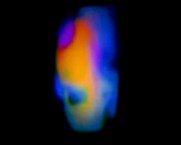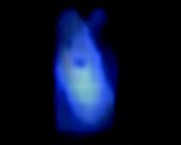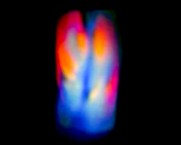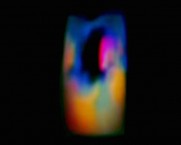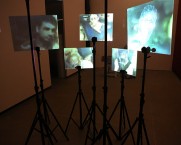C&L Shows
A Thousand Kisses Deep
Fabien Charuau
2015
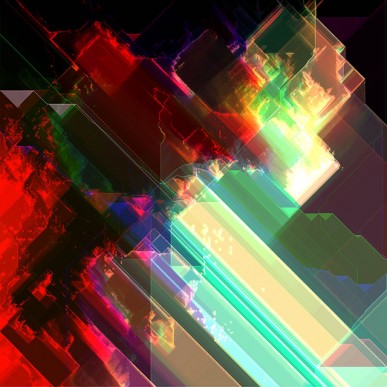
Overview
Exhibition Essay by Zeenat Nagree
Over the last four years, the principal concern of Fabien Charuau’s art practice has shifted from making photographs to reflecting on the afterlife of digital images. Charuau’s solo exhibition at Chatterjee & Lal presents three projects that regard snapshots and clips downloaded from the internet as found objects. Assembling this content in video, and creating new images through the application of code-based processes, Charuau considers how access to technology is altering the expression of desire, intimacy and devotion among Indians.
A Thousand Kisses Deep (2015) takes as its starting point photographs of couples kissing each other uploaded on Facebook and Instagram following recent countrywide protests against moral policing. Like the Kiss of Love demonstration in Kochi last year, these actions were met with violent opposition from various right-wing religious and political groups. The exhibition comes at a time when the state is frequently attempting to curtail individual liberties and control citizens’ private lives. The images that Charuau has collected then are not only displays of affection but also serve as testaments to the defiance of conservative social norms.
Charuau has processed the photographs through an algorithm to determine the “energy” of each pixel, that is the relationship between a pixel and its neighbours in terms of how similar or different they are to each other. Used routinely in photo editing, Charuau deploys this tool out of an interest in the materiality of digital images, in speculating whether clusters of pixels contain something akin to energy. Can the charge of a movement for sexual liberation seep into the pixels of a digital image?
The algorithm that Charuau has devised treats each pixel as a unit of information, and uses this to create representations of the minute variations between pixels in any given image. The choice of colour and its intensity in the resulting abstracts has not been pre-determined. Thus, while Charuau’s process shares affinity with techniques of data visualization, the final output recalls microscopic images of crystals and their formation through self-organization.
Charuau’s engagement with the subject of sexual interaction in India began with Send Some Candids (2012), an investigation into internet forums for voyeurs. There, Charuau found hundreds of photographs of women shot in public spaces without their knowledge or consent. Most of these were taken covertly using mobiles. Assembled into a slideshow, select images from the 10,000 that Charuau has amassed run alongside a voiceover composed from fragments of objectifying commentary sourced from the websites themselves. The work provides a disturbing view of how the widespread use of handheld cameras is facilitating sexual harassment on the streets that then finds an audience online. In addition, it presents an instance, no doubt startlingly perverse, of the impact of cellphones on the practice of photography.
Although Send Some Candids and A Thousand Kisses Deep offer a stark contrast between interactions mediated through a lens, they share concerns about the power of photography, the easy distribution of the digital image, and the influence of current camera technology on public life. Both grapple with task of digging through the repository of seemingly immortal images on the internet in order to assess our changing modes of communication. Their subject matter raises questions about the denial and demonization of desire while taking into account the evolving practices of image-making itself.
Within this matrix of power and passion, Charuau has placed footage of worshippers in temples in Being Seen Trying (2014). The clips featured in the installation are extracted from online broadcasts of deities for audiences who are only able to offer prayers online. Since a darshan refers to an exchange of glances between the deity and the devotee, the practice of conducting virtual darshans implies that the digital image on a screen can also facilitate an exchange of glances.
Charuau doesn’t picture the deity, however. It is the devotees who form the subject of Being Seen Trying, captured by the cameras of virtual darshans in between broadcasts of the idol in the temple. Charuau overlays these blurry moving images with face detection software, used frequently in easy-to-operate cameras as well as in surveillance. It’s as if Charuau is trying to map the presence of the intangible intimacy between the deity and the devotees through an analysis of the videos.
Being Seen Trying may seem like an unlikely companion to A Thousand Kisses Deep and Send Some Candids but it benefits from creating unease in the viewer. It reminds us of the role that religious mores play in the suppression of the expression of intimacy even as it attempts to distil the same emotion within an image. Beyond this connection, a trajectory can be traced through all three projects. In Send Some Candids, the lens serves a tool of violation, its relationship to the subject is exploitative. Whereas, in Being Seen Trying, the camera is used to facilitate a connection, a spiritual exchange. Further, in A Thousand Kisses Deep, the subjects of the photograph exercise control over their image, the lens is used in an assertion of their individuality and freedom.
